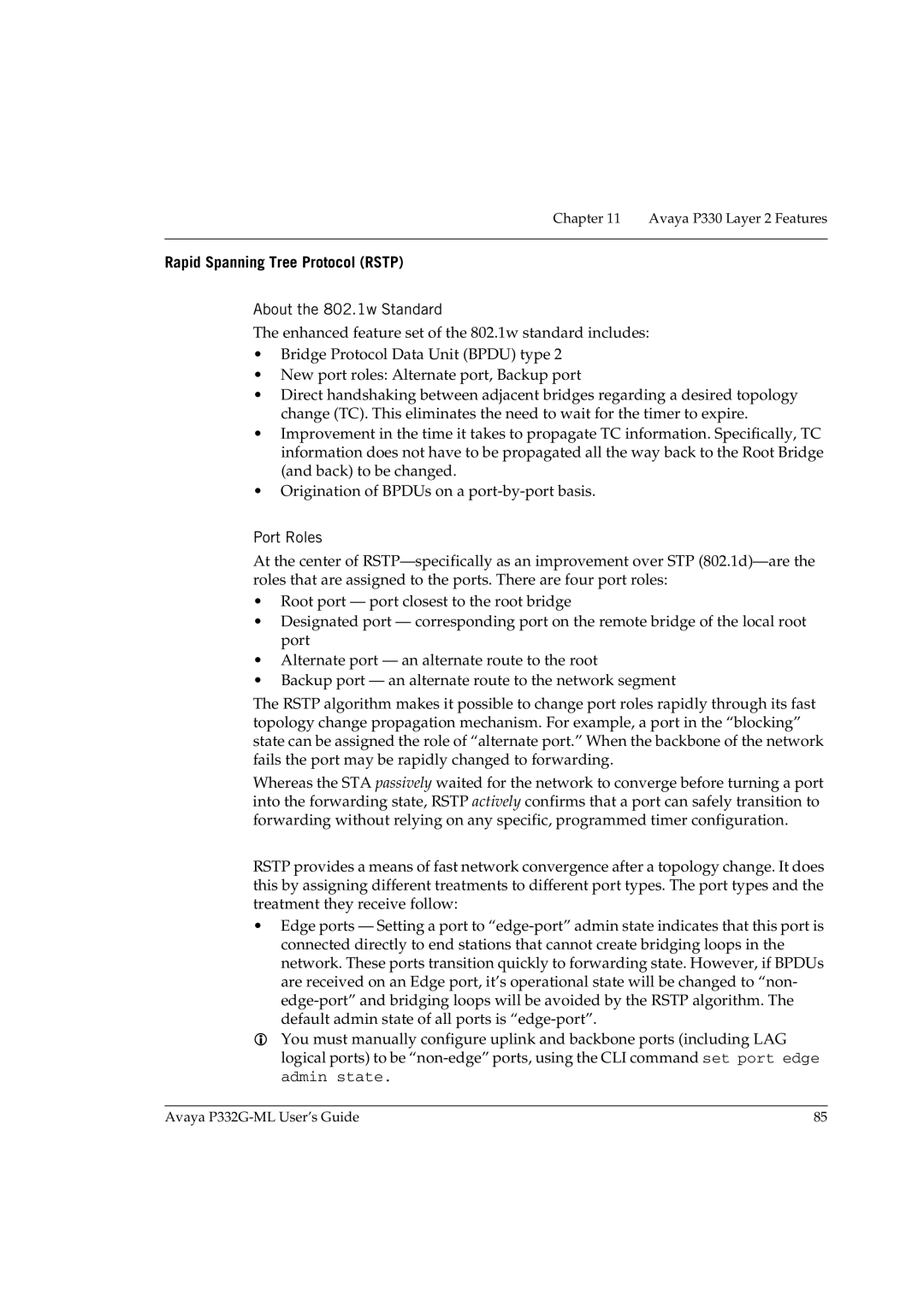
Chapter 11 Avaya P330 Layer 2 Features
Rapid Spanning Tree Protocol (RSTP)
About the 802.1w Standard
The enhanced feature set of the 802.1w standard includes:
•Bridge Protocol Data Unit (BPDU) type 2
•New port roles: Alternate port, Backup port
•Direct handshaking between adjacent bridges regarding a desired topology change (TC). This eliminates the need to wait for the timer to expire.
•Improvement in the time it takes to propagate TC information. Specifically, TC information does not have to be propagated all the way back to the Root Bridge (and back) to be changed.
•Origination of BPDUs on a
Port Roles
At the center of
•Root port — port closest to the root bridge
•Designated port — corresponding port on the remote bridge of the local root port
•Alternate port — an alternate route to the root
•Backup port — an alternate route to the network segment
The RSTP algorithm makes it possible to change port roles rapidly through its fast topology change propagation mechanism. For example, a port in the “blocking” state can be assigned the role of “alternate port.” When the backbone of the network fails the port may be rapidly changed to forwarding.
Whereas the STA passively waited for the network to converge before turning a port into the forwarding state, RSTP actively confirms that a port can safely transition to forwarding without relying on any specific, programmed timer configuration.
RSTP provides a means of fast network convergence after a topology change. It does this by assigning different treatments to different port types. The port types and the treatment they receive follow:
•Edge ports — Setting a port to
You must manually configure uplink and backbone ports (including LAG logical ports) to be
Avaya | 85 |
